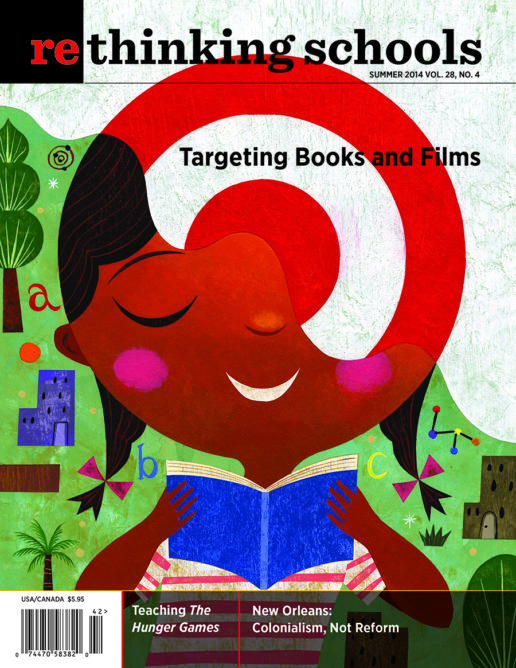Our picks for books, videos, websites, and other social justice education resources 28.4
Middle/High School
Angel Island: Gateway to Gold Mountain
By Russell Freedman
(Clarion Books, 2014)
81 pp.
Today Angel Island, sitting in the midst of San Francisco Bay, is a wooded California State Park with trails, picnic tables, and spectacular views. But between 1910 and 1940, Angel Island was the site of an immigration station where most Asian immigrants were interrogated pending entry to the United States—and sometimes imprisoned. Russell Freedman’s Angel Island offers a brief but valuable overview of immigrants’ experiences on Angel Island. It is filled with photographs, vignettes, and examples from the short poems carved into the walls of detention barracks:
For more than 20 days I fed on wind and tasted waves . . .
How was I to know that I would become a prisoner
suffering in this wooden building?
The Port Chicago 50: Disaster, Mutiny, and the Fight for Civil Rights
By Steve Sheinkin
(Roaring Book Press, 2014)
200 pp.
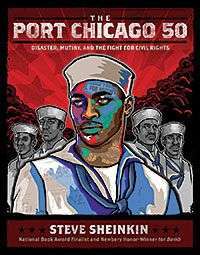
In 1944, an explosion resulting from officers’ gross safety violations killed 320 sailors and civilians, primarily African American, in Port Chicago, California. Following the explosion, many surviving sailors refused to return to work until the lethal conditions were addressed. The top (white) military brass responded with accusations of mutiny. Despite threats of a firing squad, 50 African American sailors stood their ground. They were found guilty and sentenced to federal prison. Drawing on oral histories collected by Robert Allen, Steve Sheinkin’s new book for young adults provides an engrossing introduction to not only the Port Chicago 50, but also to Jim Crow in the World War II military. The book is full of stories of the brave servicemen who stood for justice in the face of accusations of cowardice and treason. The reader learns of the tactics used to divide them, and the support they received from the African American press, Thurgood Marshall, and the NAACP.
The Great War: July 1, 1916: The First Day of the Battle of the Somme
By Joe Sacco
(W. W. Norton & Company, 2013)
unpaginated
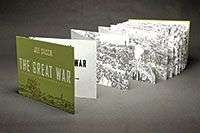
Wow. We’ve never seen a book like this. Cartoonist Joe Sacco (Palestine, Safe Area Goražde, Footnotes in Gaza) has imagined the first day of the Battle of the Somme, launched July 1, 1916, during World War I, “The Great War.” As Adam Hochschild writes in an accompanying historical note, “More than 19,000 were killed, most of them within the first disastrous hour.” Sacco’s drawing is one continuous illustrated panorama, unfolding on connected pages. Those of us whose curriculum includes World War I will be able to find numerous ways to engage students with Sacco’s meticulous depiction of this horrific day—emblematic of a hideous war. In an author’s note, Sacco writes that he hopes “that even after a hundred years the bad taste has not been washed from our mouths.”
Risking Everything: A Freedom Summer Reader
Edited by Michael Edmonds
(Wisconsin Historical Society Press, 2014)
250 pp.
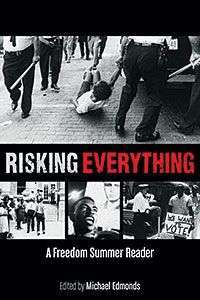
This year marks the 50th anniversary of a milestone event in U.S. history, Freedom Summer. The largest collection of primary documents from Freedom Summer is now housed at the Wisconsin Historical Society (much available online). Risking Everything offers a selection of those documents in chronological order, from the spring to the fall of 1964. The history comes to life through the range of the documents, which include lessons from the Freedom Schools’ curriculum, letters home from volunteers, a Klan newsletter, hate mail, fliers, and reflections by activists.
Brazil’s Dance with the Devil: The World Cup, the Olympics, and the Fight for Democracy
By Dave Zirin
(Haymarket Books, 2014)
246 pp.
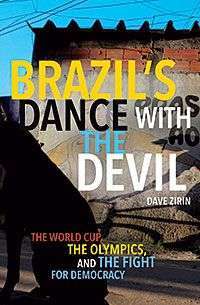
This book should be required pre-reading for any high school student or adult planning to watch the 2014 World Cup games or the 2016 Olympics. Drawing on extensive interviews with Brazilians, Dave Zirin focuses on the history of soccer and the economic impact for the rich and the poor of both international competitions. As Zirin explains in the closing lines of the book: “Our collective destiny is tied up with every eviction, every surveillance camera, and every cracked skull on the road to the World Cup and Olympics.”
Early Childhood/Elementary
All the Colors We Are: The Story of How We Get Our Skin Color/Todos los colores de nuestra piel: La historia de por qué tenemos diferentes colores de piel
By Katie Kissinger
Photographs by Chris Bohnhoff
(Redleaf, 20th Anniversary edition, 2014)
32 pp.
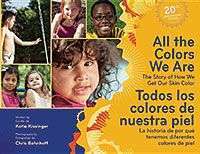
We’re delighted to see this 20th anniversary edition of Katie Kissinger’s classic book, All the Colors We Are. Kissinger—author of the memorable Rethinking Schools article “Holding Nyla”—has written a book that deals with skin color in a straightforward, scientifically accurate, child-friendly manner. Young children are curious about why people have different skin colors, and too often teachers are tempted to brush this curiosity aside in the name of a glib “We’re all the same.” The book is the product of Kissinger’s years-long work with children, and features valuable teaching suggestions to get children thinking imaginatively and unself-consciously about skin color. The book, including teaching ideas, is fully bilingual.
Separate Is Never Equal: Sylvia Mendez & Her Family’s Fight for Desegregation
By Duncan Tonatiuh
(Abrams Books for Young Readers, 2014)
40 pp.
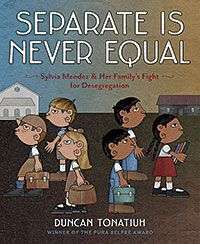
Although written and illustrated for upper elementary school, even adults will learn a lot about the Mendez v. Westminster desegregation case in California that preceded Brown v. Board of Education. Author and illustrator Duncan Tonatiuh tells the story of how Mexican-born Gonzalo Mendez and Puerto Rican Felicitas Mendez challenged the separate and unequal school system in California. They moved to Westminster during WWII and their children were sent to a run-down school for Mexican American children. The book highlights the role of Mendez as an organizer—galvanizing other parents and legal support to pursue an equal education for all children. The illustrations are in Tonatiuh’s distinctive, folkloric style.
The Girl from the Tar Paper School: Barbara Rose Johns and the Advent of the Civil Rights Movement
By Teri Kanefield
(Abrams Books for Young Readers, 2014)
56 pp.
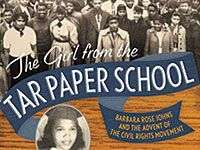
Lessons on Brown v. Board of Education on this 60th anniversary should not begin with the 1954 Supreme Court decision but, instead, with the decades of activism that led to the historic ruling. And there is no better way to hook students than with the school walkout led by 15-year-old Barbara Rose Johns in Prince Edward County, Virginia, in 1951. Carefully planned with a sworn-to-secrecy group of fellow high school students, Johns arranged to have the principal called out of the building and then held a high school assembly to announce the walkout to demand a new school building. The preparation and the years of struggle that ensued are told in this well-written and beautifully illustrated book for middle school students.
Professional Development
Picturing Restorative Justice: A Vision of the World We Want to Live In
By Joan Kresich
(Infinity Publishing, 2012)
63 pp.
This slender but provocative volume opens with the wonderful quote from Cornell West: “Justice is what love looks like in public.” Through quotes, illustrative cartoons, and questions, readers are introduced to the principles—and advantages—of restorative justice, as opposed to the retributive justice we are used to, which “adds a new harm to the chain.” Although this is not exactly a handbook for implementing restorative justice in schools, it could be used in a variety of contexts, including for staff development or directly with students.

